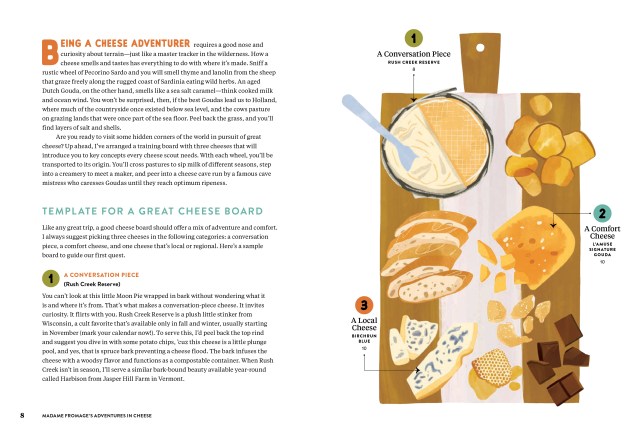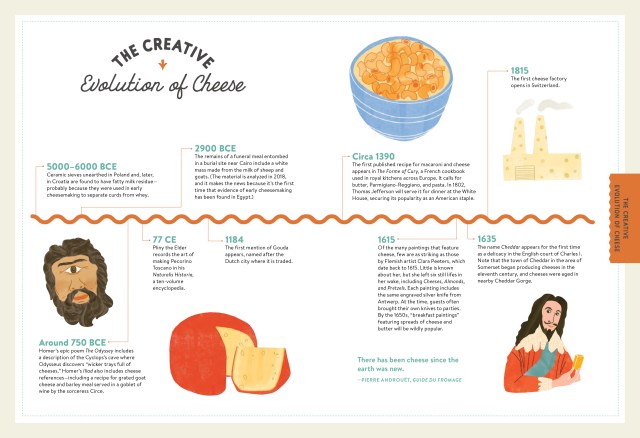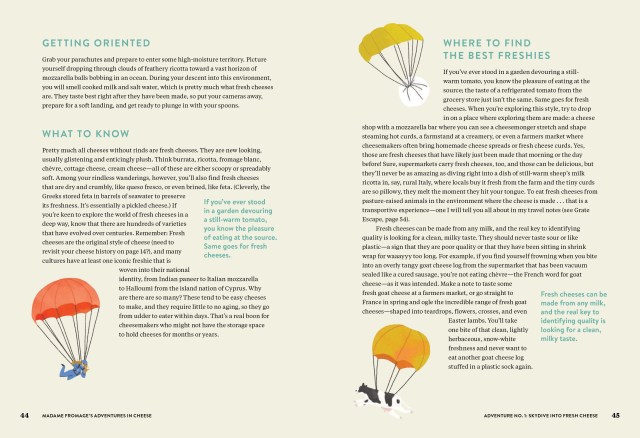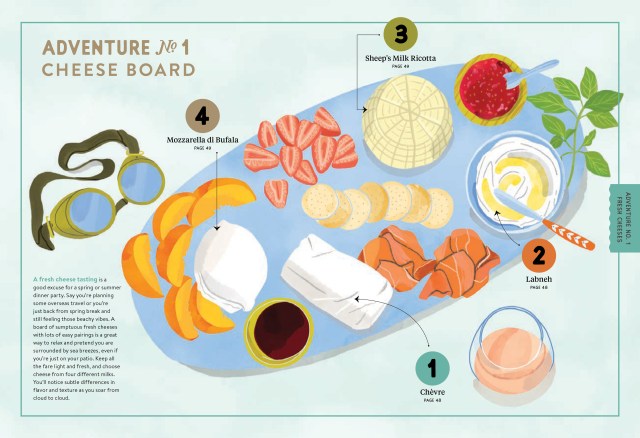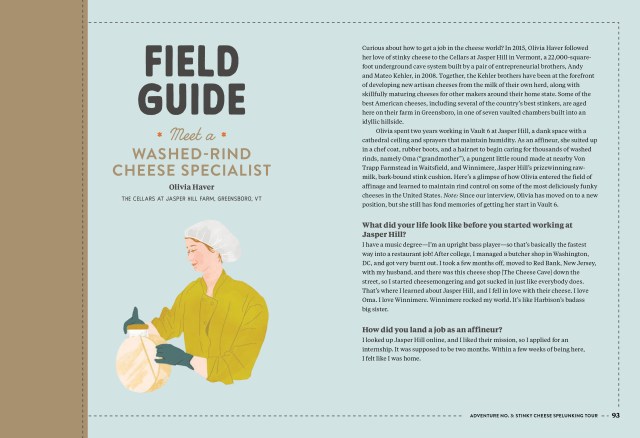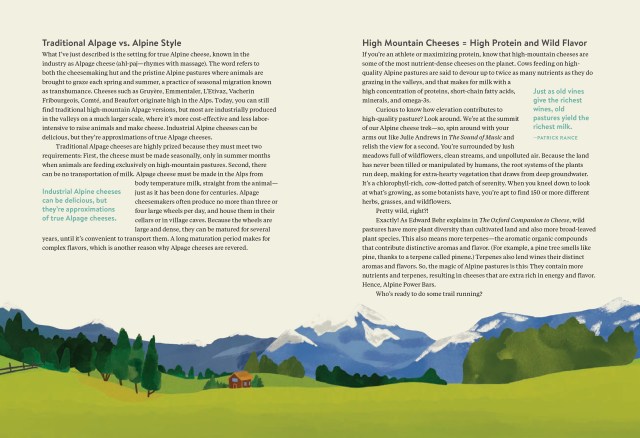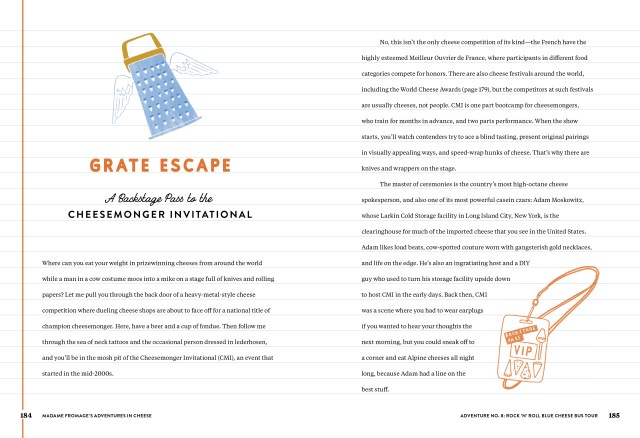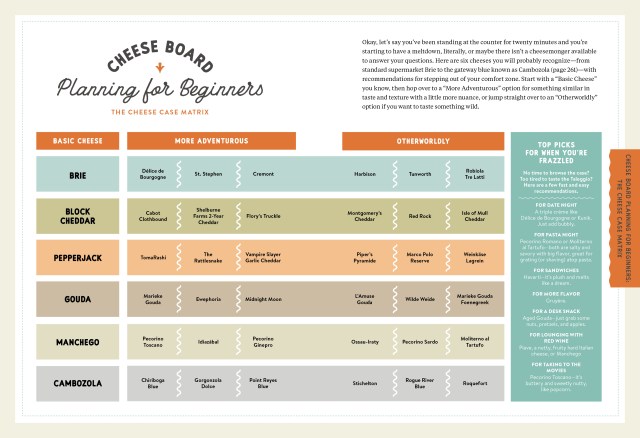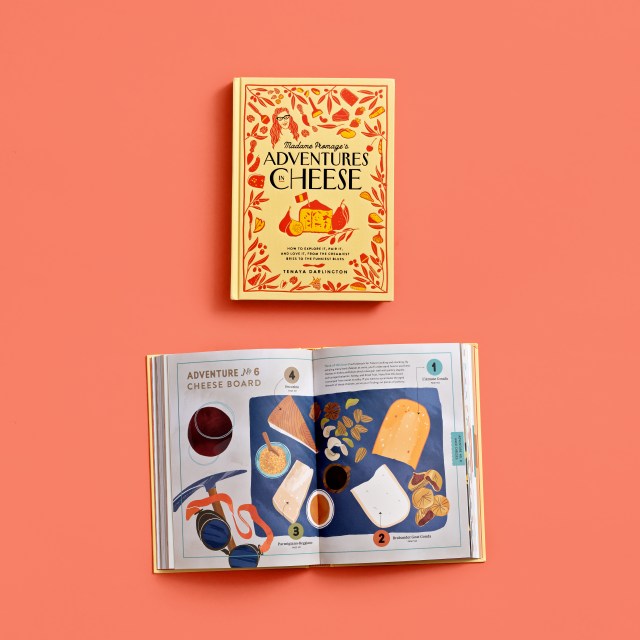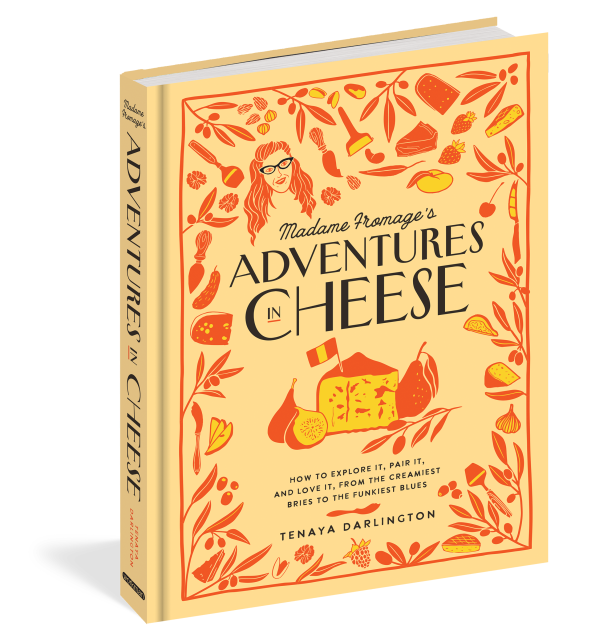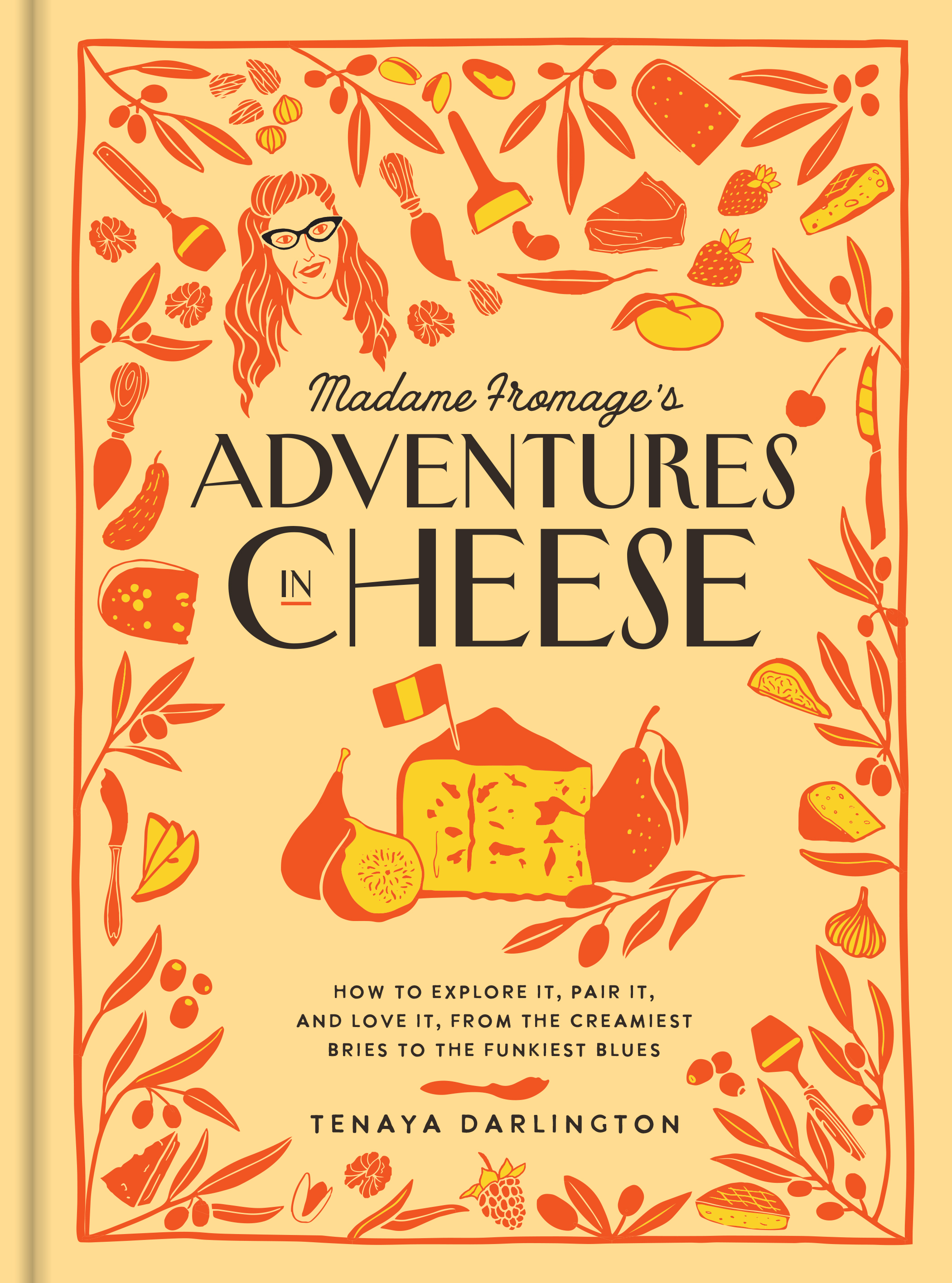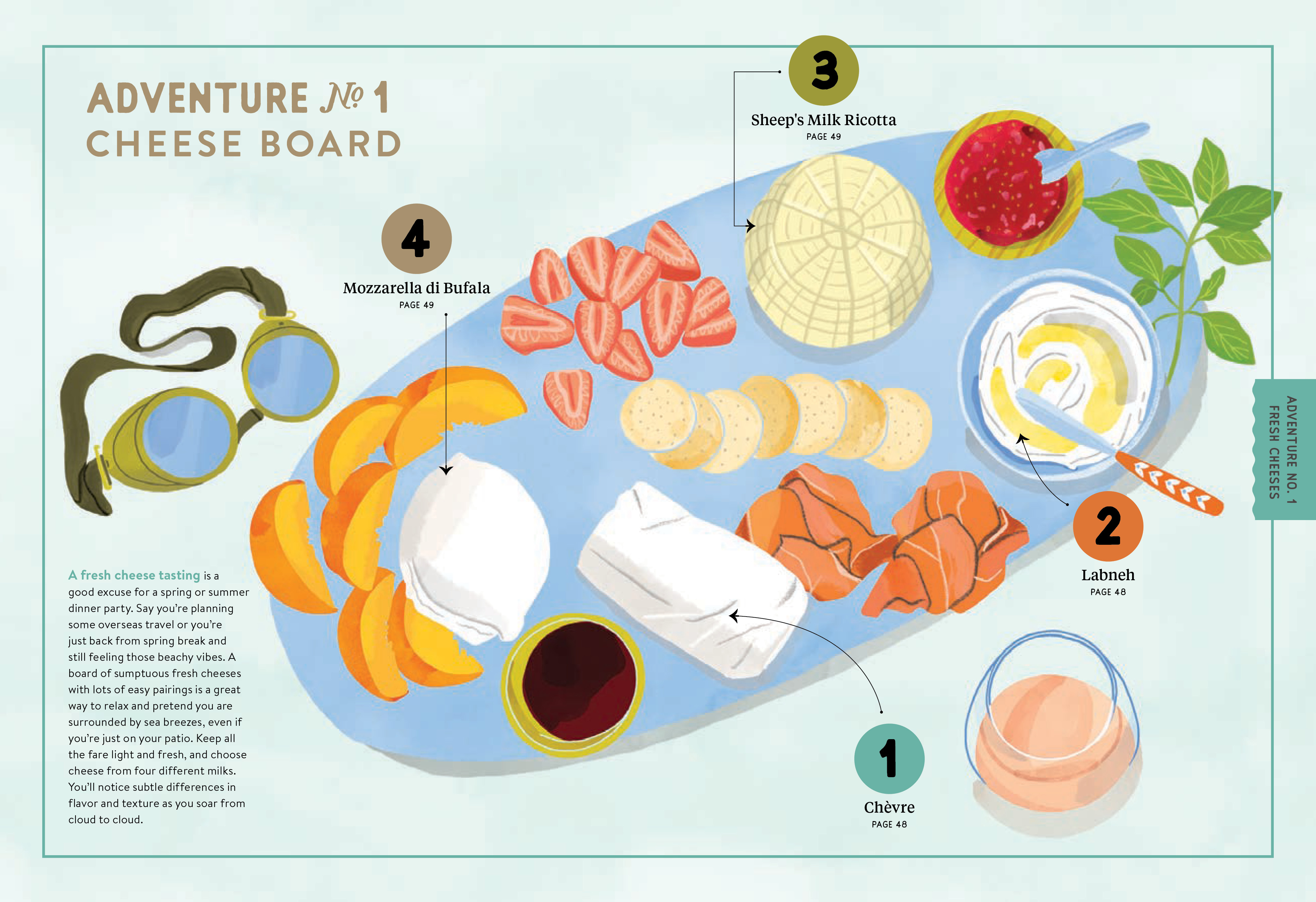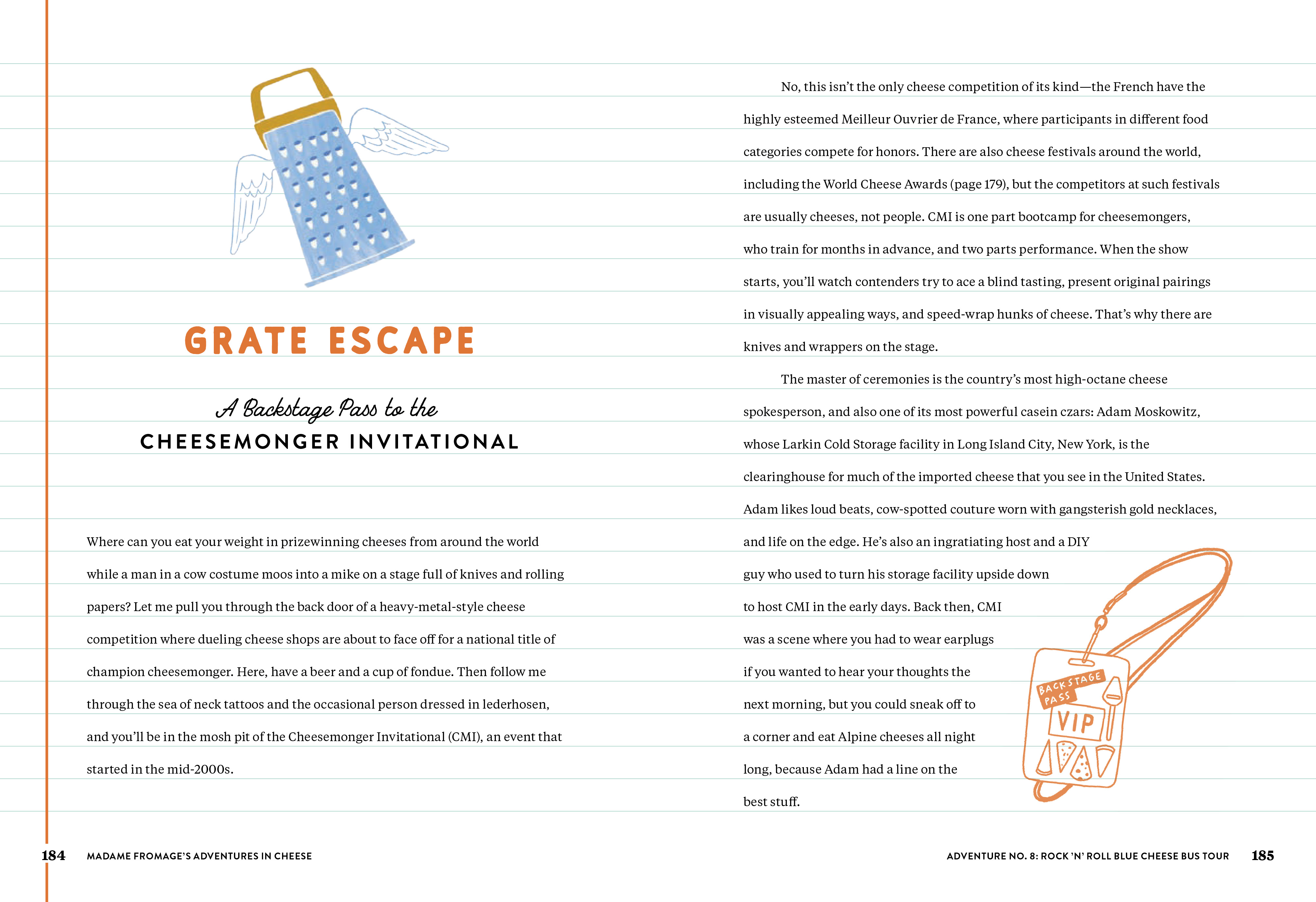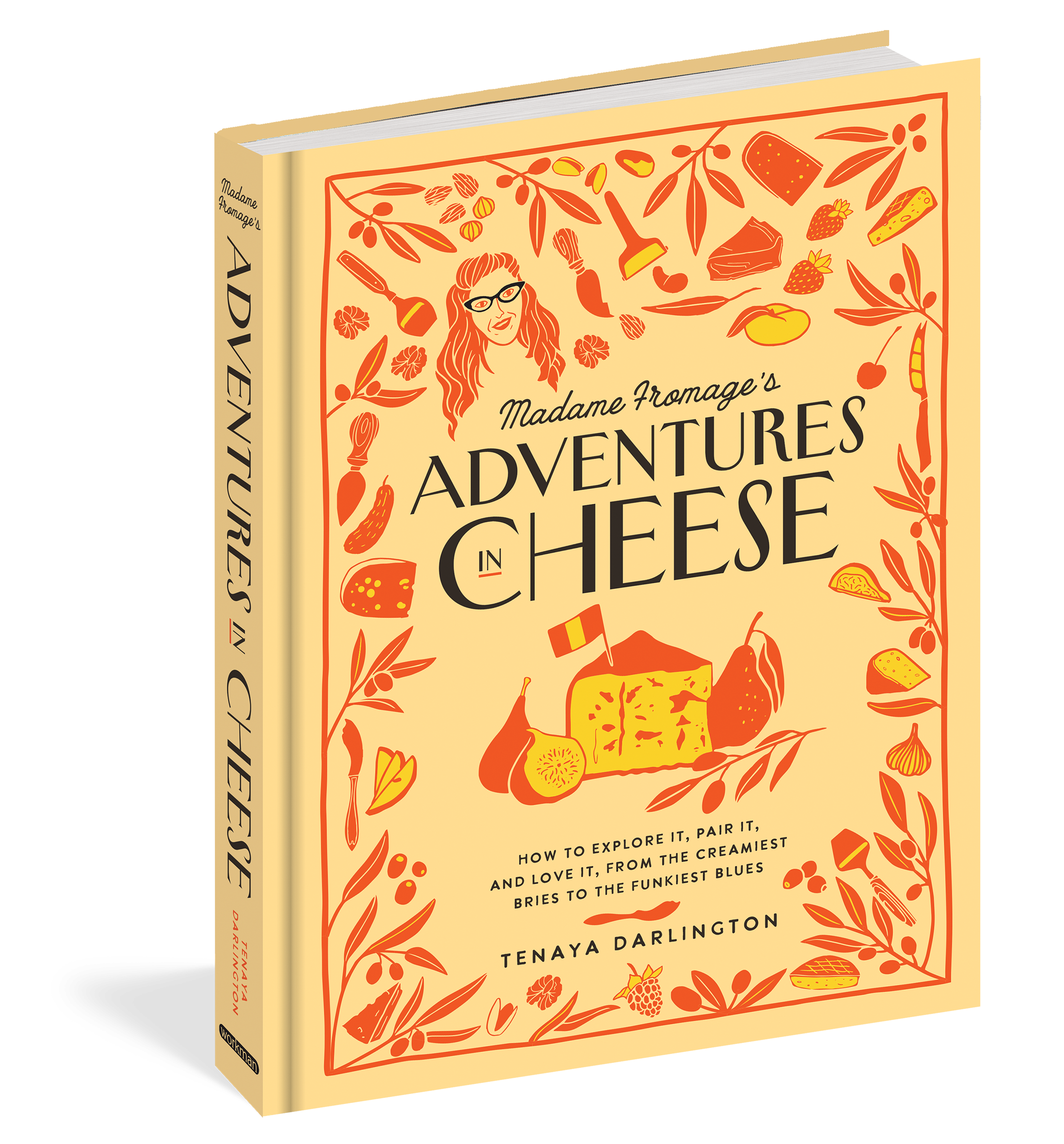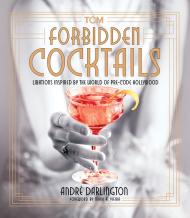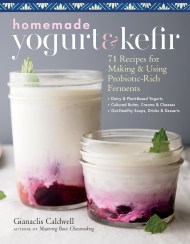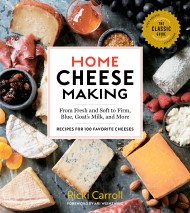Promotion
Use code BEST25 for 25% off storewide. Make sure to order by 11:59am, 12/12 for holiday delivery!
By clicking “Accept,” you agree to the use of cookies and similar technologies on your device as set forth in our Cookie Policy and our Privacy Policy. Please note that certain cookies are essential for this website to function properly and do not require user consent to be deployed.
Madame Fromage’s Adventures in Cheese
How to Explore It, Pair It, and Love It, from the Creamiest Bries to the Funkiest Blues
Contributors
Formats and Prices
- On Sale
- Sep 12, 2023
- Page Count
- 288 pages
- Publisher
- Workman Publishing Company
- ISBN-13
- 9781523506774
Price
$30.00Price
$38.00 CADFormat
Format:
- Hardcover $30.00 $38.00 CAD
- ebook $14.99 $19.99 CAD
This item is a preorder. Your payment method will be charged immediately, and the product is expected to ship on or around September 12, 2023. This date is subject to change due to shipping delays beyond our control.
Buy from Other Retailers:
Meet Madame Fromage, aka Tenaya Darlington. A charming, witty, deeply knowledgeable and, above all, passionate caseophile—a fancy way of saying cheese lover—she’s here to teach us pretty much everything we need to know about choosing cheese, tasting it, pairing it, and sharing it.
Structured around the concept of eight tasting journeys, Madame Fromage takes us on tours through the cheese world. We skydive into fresh cheeses, like chevres, ricotta, and buffalo mozzarella. Trek through the Alpines, with its Emmentalers and Gruyeres. Go spelunking into stinky cheeses like Taleggio, Pont-l’Eveque, and the rank Langres. Take a geological adventure with aged cheeses, including Parmigiano Reggiano and Manchego, and hop on a blue cheese rock ’n’ roll tour—with their piercings and weird markings, these funky gorgonzolas, Roqueforts, and Stiltons are the rock stars of the cheese world. They also pair well with bourbon and elevate a burger, not to mention a wedge salad.
Along the way we learn about pasture-raised animals, spend time with fearless cheesemakers, discover tips on creating next-level boards for every style of cheese. And find a bucket-list of 25 greats readers will want to tick off, one by one. For any curd nerd whose eyes light up at the mere mention of triple crème, it’s a journey that can’t be missed.
Genre:
-
"Fun, fascinating, and beautifully written… If you've ever found yourself lost in a cheese shop, Madame Fromage is the perfect guide to help you find your way to cheese nirvana."
—Patrick McGuigan, author of The Philosophy of Cheese
"A worldly romp—the ultimate ‘how to enjoy cheese’ tome."
—Allison Hooper, cofounder, Vermont Creamery
"Tenaya Darlington takes us on a creative journey that captivates and invigorates the palate. She has turned the sometimes daunting world of cheese into something fun and exciting!"
—Joe Beddia, author of Pizza Camp
"Madame Fromage has been my cheese guru for years—I am one of her “curd nerds”—and Tenaya's new book may be her best yet. Informative, thorough, with gorgeous illustrations. But the real thrill here is the wonderful writing, the way Tenaya’s descriptions bring these cheeses to life. This is cheese writing on the level with great wine or travel writing. No one writes about cheese better than Tenaya does."
—Jason Wilson, author of Godforsaken Grapes and Boozehound, and creator of the Everyday Drinking newsletter

